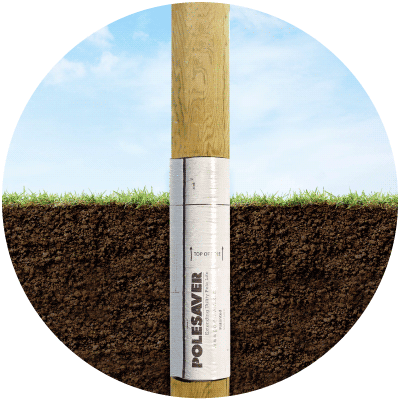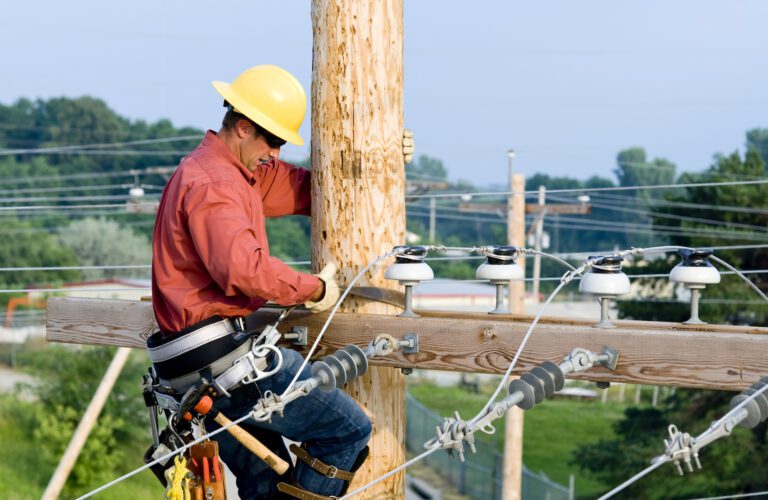What Do We Know About The Creosote Ban in Europe?
Creosote is an excellent wood preservative, typically giving a pole life of 40 years or more. The continued use of Creosote as a wood preservative in Europe is now under threat with an E.U. license review due in Autumn 2021. Creosote was classified as a Category C.B. carcinogen by the European Chemicals Agency (E.C.H.A.) as well as a persistent, bioaccumulative and toxic substance. As a result of this and a recent creosote ban in France, It is now looking increasingly unlikely that the licence for Creosote will be renewed in Europe.
Request a Copy Of The Report Now Below (Instant Download)
Alternative Utility Pole Materials And Treatments
Alternative pole materials such as steel, concrete and composites tend to be more costly, challenging to climb, conductive (steel) and heavy (concrete). In addition to this, their manufacture generates significant amounts of CO2 (up to 1.46 tonnes per pole). For many utilities who aim to reduce CO2 emissions year on year, this can be a problem. In contrast, wooden poles act as carbon sinks, absorbing CO2 from the environment. Replacement water-based copper preservative treated poles have been used in some E.U. countries since 2005 but have suffered from early failures at the ground line section of the pole due to decay.
Newer versions of these copper-based preservatives now include fixatives and co biocides to overcome problems with copper tolerant fungi. When used at higher retention levels they give longer life, but utilities tell us that they do not expect these wood preservatives to give the lifespan offered by Creosote.
Recently copper in oil type wood preservatives has been launched as an alternative to Creosote to try and address the concerns of shorter pole life when using water-based copper wood preservatives. Copper and oil preservatives use a combination of copper as the primary biocide along with fixatives and co biocides plus a water repellent oil such as A.W.P.A. P9a oil or tall oil. These products should offer a longer life than water-based copper preservative alone as the addition of water repellent oil will reduce moisture ingress and loss of preservative over time. There is currently no test data or field service data to establish how long poles protected with this preservative will last.
To summarise, all wood preservatives offer partial protection from decay that fades over time due to leaching and oxidation. The loss of effectiveness of wood preservatives over time leads to decay at the ground line section of the pole where conditions for wood decay to occur are ideal. These ideal conditions do not tend to exist deeper in the ground or above ground.

Barrier Protection Products
Physical barrier products provide additional protection against wood decay at the critical ground line section of the pole where conditions are ideal for wood decay. The different types of barrier products are covered in our earlier blog, to summarise they fall into two categories partial barriers and full barriers. Partial barrier products do not seal the wood behind the sleeve, and as a result of this, there have been reports from utilities of “wet band decay” failure at the top of partial barrier products. In this case, moisture is drawn upwards to the top of the sleeve from deeper in the ground by capillary action between the sleeve and the wood creating a wet or damp band at the top of the sleeve where decay can then occur.
Full barrier sleeves such as Polesaver provide a total seal to the wood behind the sleeve. The complete seal lowers the entry point for moisture from the ground preventing capillary action and wet band failure at the top of the sleeve. Full barrier sleeves make conventional ground line decay impossible by excluding all the factors necessary for wood decay to occur. They also prevent loss of wood preservative by leaching and oxidation, ensuring the maintenance of preservative protection within the sleeved zone over time. Independent field testing samples of full barrier sleeved preservative dip treated test samples have proven to be 100% effective at preventing decay after 20 years of testing.
In addition to this, testing at a major telecom company across three separate test sites demonstrates that full barrier sleeves maintain a lower moisture content in the wood at the top of the sleeve than Creosote treated poles. On average, full barrier sleeves had a wood moisture content of 20% compared to the average ground line moisture content of 26% seen in Creosote-treated poles. In comparison, waterborne copper preservative treated poles had an average moisture content of 32%, and partial barrier sleeves had a moisture content at the top of the barrier of 43%.
Based on long term independent field test data poles protected with low-cost Polesaver barrier sleeves used in conjunction with readily available water-based copper wood preservative or copper in oil preservatives have an expected evidence-based service life of 40 years or more giving a cost-effective, proven alternative to Creosote.

Learn More

PRESERVATIVE BAN
How Can Polesaver Help?
With an expected pole service life of 50 years or more Polesaver protected poles allow you to maintain or improve pole life and performance with reduced toxicity wood preservatives.

PRESERVATIVE BAN
How Can Polesaver Help?
With an expected pole service life of 50 years or more Polesaver protected poles allow you to maintain or improve pole life and performance with reduced toxicity wood preservatives.
Or contact us today for further information









